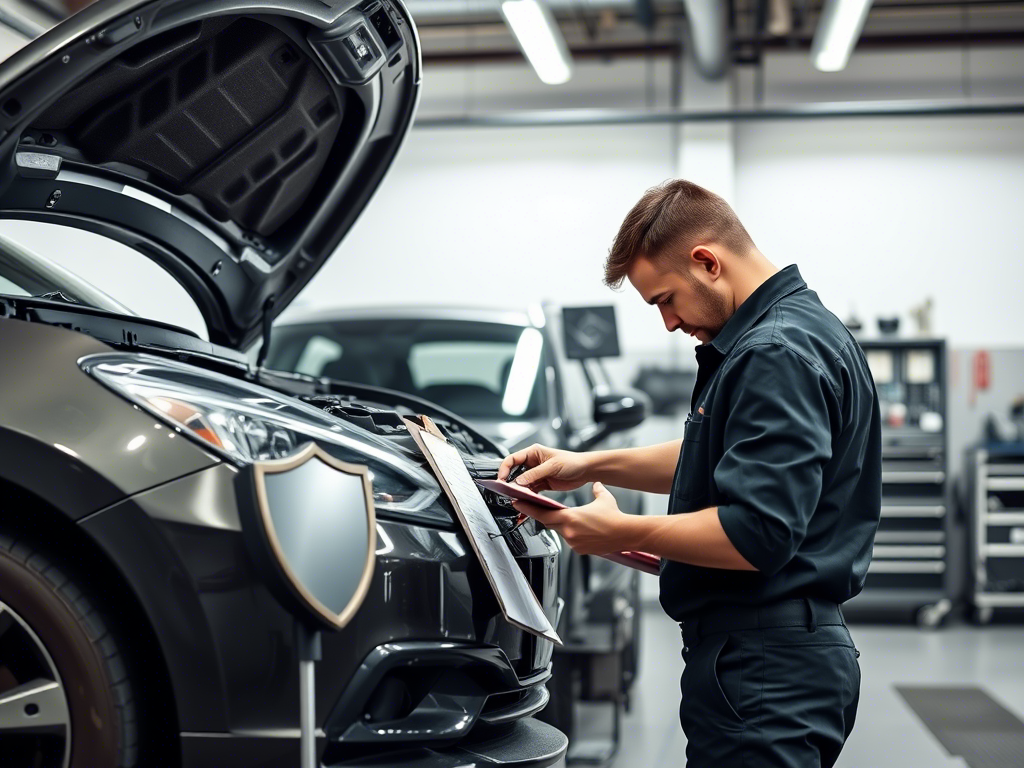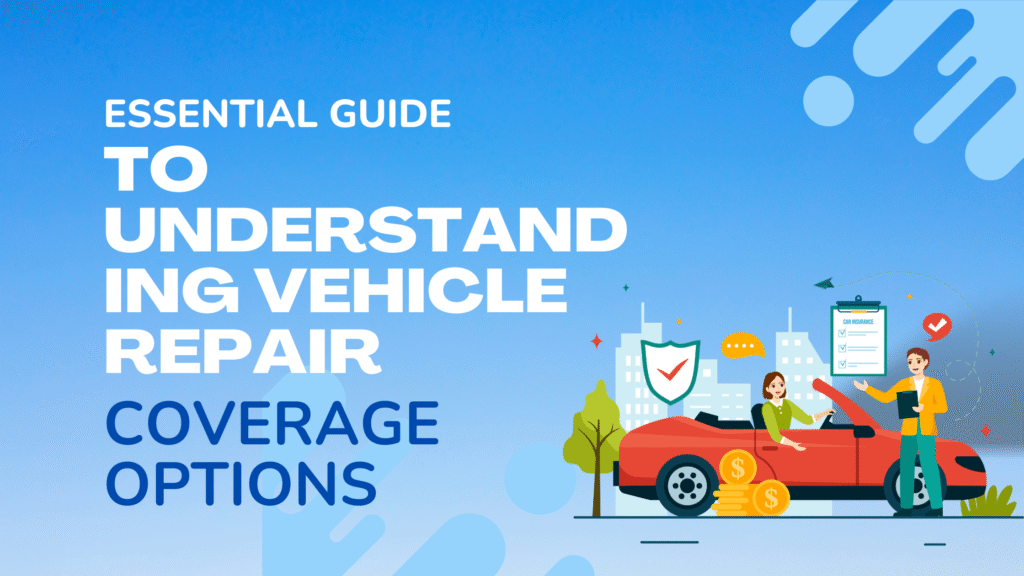Let’s face it, vehicle repairs never come at a good time. One minute your car is running fine, and the next, you’ve got a dashboard full of warning lights and a repair bill that could wreck your monthly budget. Sound familiar?
That’s why vehicle repair coverage exists to give drivers peace of mind when unexpected breakdowns happen. But with so many coverage options out there, figuring out which plan is best can be overwhelming.
In this guide, we’re breaking down everything you need to know about vehicle repair coverage in plain English. Whether you’re driving a brand-new sedan or an old pick-up truck, we’ll explore your options and help you make a smart decision. So buckle up and let’s get into it.
What Is Vehicle Repair Coverage?

Think of vehicle repair coverage as a safety net for your car. While car insurance helps if you’re in an accident, repair coverage steps in when your engine blows, your transmission fails, or your air conditioning gives out on the hottest day of summer.
It helps cover the cost of repairing or replacing parts of your vehicle that break down due to mechanical failure or wear and tear, not accidents. Basically, it fills the gap where a manufacturer’s warranty leaves off.
Still confused? Let’s compare it to something familiar health insurance. Just like your health insurance covers doctor visits and medical procedures when your body “breaks down,” vehicle repair coverage handles repairs when your car stops working properly. Simple enough, right?
Why Do You Need Vehicle Repair Coverage?
You might be thinking: “My car is new,” or “I take good care of my vehicle.” That’s great, but even well-maintained cars can break down. And when they do, repairs aren’t cheap. According to AAA, the average repair bill can cost between $500 and $1,500, and major repairs like transmission issues can soar beyond $3,000.
Having coverage means you won’t have to worry about draining your emergency savings or maxing out a credit card just to get back on the road.
Here’s why having a plan in place could be a smart move:
- Protect your wallet: Unexpected car trouble won’t turn into unexpected expenses.
- Avoid stress: You can drive with peace of mind, knowing you’re covered.
- Extend your vehicle’s life: Keeping up with repairs can help your car last longer.
Types of Vehicle Repair Coverage
Now that you know why it’s important, let’s look at the main types of coverage you can choose from. Each plan comes with its own features, benefits, and cost. Here’s a quick rundown:
1. Manufacturer’s Warranty
If you’ve recently bought a new car, this is probably what you already have. A manufacturer’s warranty typically lasts between 3 to 5 years or up to a certain number of miles (like 36,000 or 60,000 miles). It covers most mechanical issues, but only for a limited time.
Once this warranty expires, you’re on your own unless you choose to extend it or buy another type of coverage.

2. Extended Warranty
This is like buying more time once your manufacturer’s warranty runs out. Extended warranties can be offered by the automaker or third-party companies. They usually cover essential systems like your engine and transmission.
But before saying yes, be sure to read the fine print. Some plans have limited coverage and might not include labor costs or parts like electronics and air conditioning.
3. Vehicle Service Contracts
Also known as a VSC, this plan is often mistaken for an extended warranty, but the terms and conditions are different. Vehicle service contracts are provided by third-party companies and are more flexible in what they can cover.
You can pick a basic plan or a more comprehensive one that includes almost everything under the hood. These plans are great for used car owners who want added protection.
4. Mechanical Breakdown Insurance (MBI)
This is actual insurance; you buy it like you would your auto insurance. MBI covers repairs for mechanical failures, but it’s only available in some states and usually for newer vehicles.
- Typically offered by auto insurance companies
- Better pricing for newer vehicles with low mileage
- Often renews annually
What’s Usually Covered?
Coverage varies by provider and plan, but here’s a general idea of what’s typically included in a vehicle repair coverage policy:
- Engine and transmission repairs
- Air conditioning and heating systems
- Drivetrain and electrical systems
- Steering, brakes, and suspension parts
- Fuel and cooling system components
Just keep in mind routine maintenance like oil changes, new tires, or brake pads usually isn’t covered. Neither is damage from accidents, which is where your regular auto insurance comes in.
What to Consider Before Choosing a Plan

With so many options, how do you choose the right one? Here are a few important things to keep in mind before signing on the dotted line:
- Your car’s age and mileage: Older cars with high mileage have different needs than newer models.
- The plan’s coverage: Does it include major systems or only limited components?
- Deductibles and costs: Are repair costs split with you, or covered 100%? What’s the monthly premium?
- Where can you get repairs? Are you limited to certain repair shops or can you choose your own?
- Reputation of the provider: Read reviews and check ratings from trusted organizations like the Better Business Bureau.
Tips to Get the Best Value
Nobody wants to overpay for a plan they may never use. But at the same time, you don’t want to be stuck with a broken car and no protection. So what’s the sweet spot?
Here are a few smart tips to help you get the best bang for your buck when shopping for vehicle repair coverage:
- Compare quotes from different providers, and don’t jump at the first offer.
- Ask about what’s not covered: Sometimes, the exclusions are more important than the benefits.
- Look for plans with transferability: if you sell your car, you can add value by passing along the coverage.
- Check for roadside assistance perks: some plans offer towing, rental reimbursement, or even trip interruption coverage.
Final Thoughts: Is Vehicle Repair Coverage Worth It?
So, is vehicle repair coverage a smart investment? The answer depends on your situation. If you’re driving an older car that’s no longer under warranty, it could make a big difference when something goes wrong.
On the other hand, if you have a newer vehicle with a solid warranty, it might not be necessary, at least not yet.
Either way, it’s all about peace of mind. Knowing you’re covered can take the sting out of costly car repairs and help you stay on the road without missing a beat.
Think about this: Would you rather pay a manageable monthly fee, or suddenly shell out thousands when something breaks? For many drivers, that trade-off is well worth it.
Looking for More Insurance Insights?
Want to learn more about car insurance basics? Check out our other helpful guides on:
- Average car Miles Driven Per Year in the U.S. Explained
- Oregon SR-22 Car Insurance Guide: What You Must Know
- United Car Insurance Reviews: Real Feedback and Expert Insights
- Affordable Tesla Insurance Designed for Your Tesla’s Safety Needs
- Affordable Auto Insurance Made Easy with GoAuto Insurance
- What Is Car Repair Insurance and Is It Worth It
- Save Big with Costco Auto and Home Insurance Services
- Exclusive GEICO Discounts: Organization Membership Savings
- Save on Auto Insurance with GEICO’s Affordable Coverage Options
- Is Mechanical Breakdown Insurance Worth It for Your Vehicle?
Have You Considered Your Options?
If you haven’t reviewed your vehicle repair coverage options yet, now’s a great time. Do some research, ask questions, and pick a plan that fits both your car and your budget. Your future self (and your wallet) will thank you.
Safe travels!

